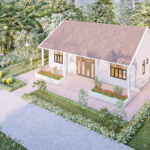Participating in the “6th Cultural Development and Elegant and Civilized Hanoian Building Press Awards 2023” competition, the team of authors including Tran Hong Van, Hoang Le Quyen, Doan Anh Tuan, and Nguyen Huu Tiep from Hanoimoi newspaper remarkably secured the A prize with their work “Rural Architecture: What Lies Ahead in the Future?” for five consecutive parts. The Hanoi Department of Culture and Sports’ Electronic Information Portal is honored to introduce the last part of this piece to our extensive readership!
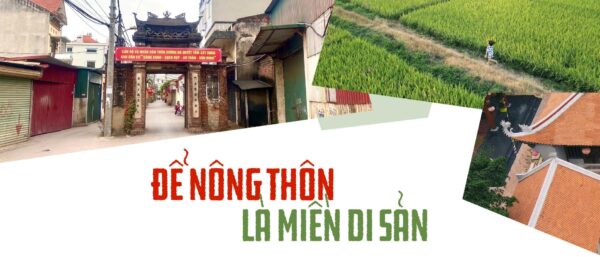
The escalating pressure from urbanization and the challenges posed by the modernization of rural areas necessitate a critical approach to the planning and preservation of rural architecture.
Directive No. 4/CT-TTg of February 7, 2023, outlining the development direction for rural architectural planning in Vietnam, aiming to establish a distinctive identity and preserve traditional architecture, asserts the government’s and Party’s enduring concern for rural architectural planning. It sets the objective of constructing a modern Vietnamese architectural foundation, rich in cultural essence, inheriting and promoting the values of traditional architectural heritage, adapted to natural conditions, socio-economic conditions, national defense, security, and international integration requirements.
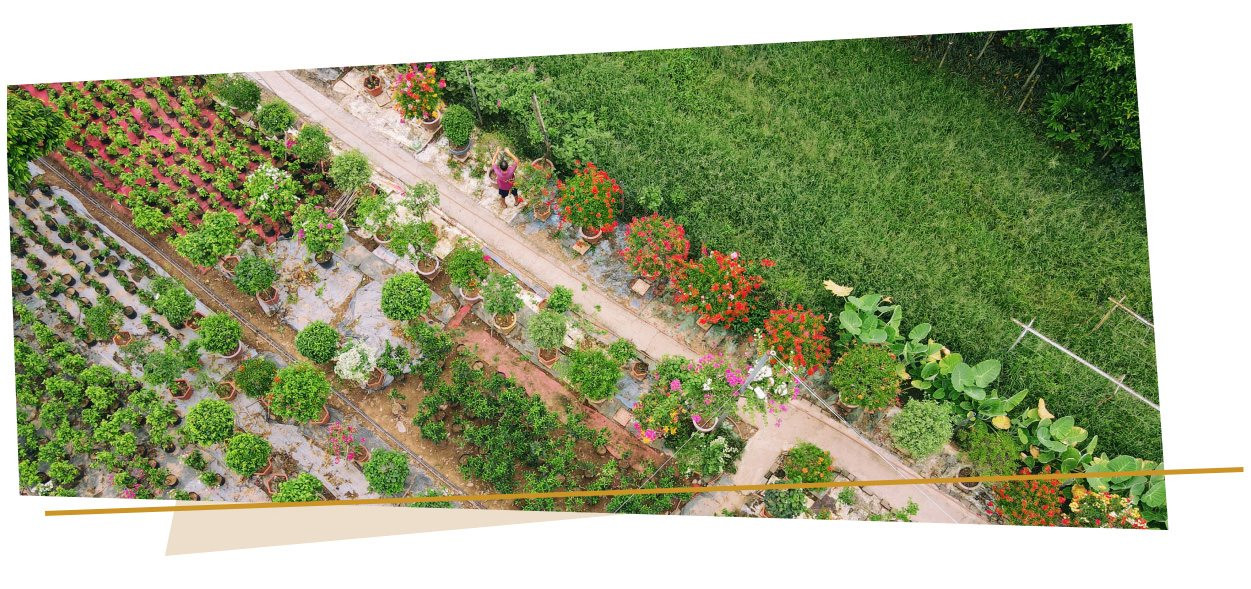
Phu Dong, an ancient village in Hanoi, thrives harmoniously between traditional crafts and cultural architecture.
During the Cultural Conference 2022, Minister of Agriculture and Rural Development Le Minh Hoan highlighted in his presentation: “While the urban landscape is considered a representative image of the socio-economic development of each country, the rural areas are the preservers of complete spiritual life, the essence of national culture, and the core spiritual values.
Rural areas are not just tangible living spaces; they are also realms of consciousness where culture creates spiritual values – intangible foundations leading towards smart villages, harmonious villages, and happy villages. These are the factors that transform rural areas into heritage.”
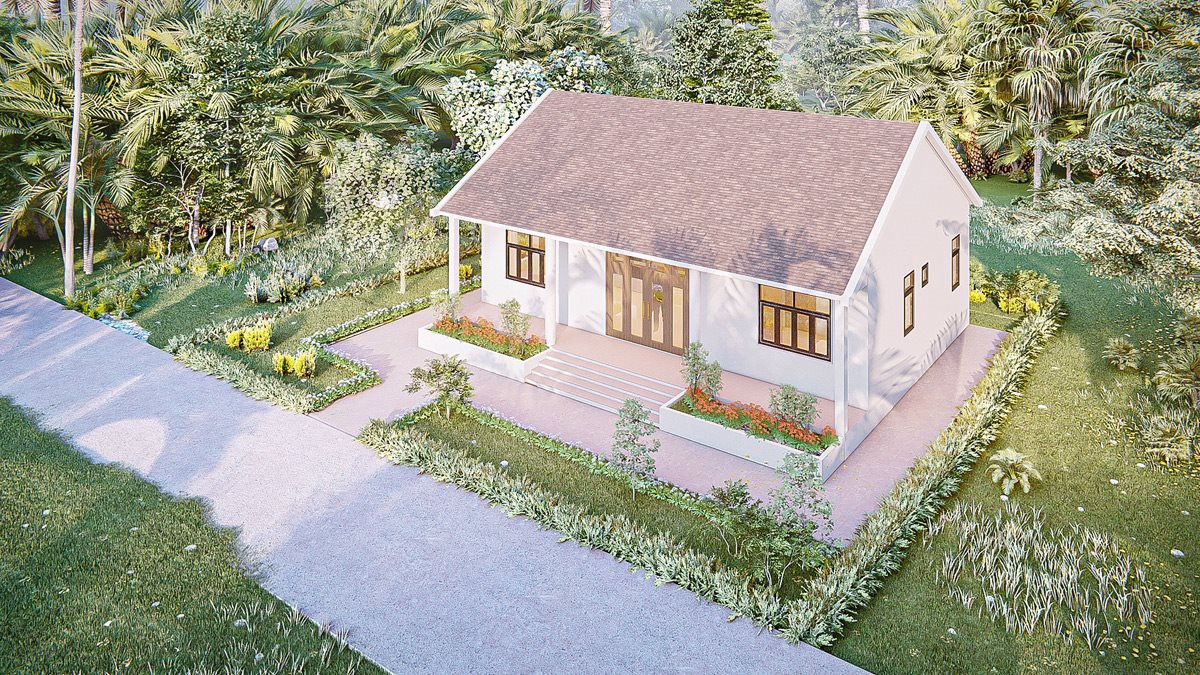
Some models of rural houses proposed by the Vietnam Architects Association.
However, how can the government’s requirements and the aspirations of the leaders of the Agriculture and Rural Development sector turn into reality for the nation’s rural areas, unraveling the knots in planning and preserving rural architecture, to both maintain cultural identity and provide motivation for rural development? Representatives of leadership at all management levels, along with experts in planning, urban management, and architecture, have collectively suggested various solutions.

From 2008 to 2012, all 401 communes in Hanoi completed the planning, appraisal, and approval of the new rural commune construction. However, planning for these communes was carried out before the general planning for district construction was established and approved, leading to numerous shortcomings. For instance, in communes where population development scale was not forecasted; technical infrastructure in many communes was not synchronized.
Notably, in areas with a high urbanization rate (such as Dong Anh, and Gia Lam), there is still no guidance on landscape architecture design, and construction control leading to the disruption and gradual decay of the structure of traditional rural villages, communes, and architecture. Many places witness spontaneous and disorderly construction, especially on agricultural land, with complex developments.
Therefore, the city People’s Committee needs to instruct departments, sectors, and local authorities to promptly complete the organization, and approval of general commune construction plans and detailed plans for missing rural residential areas; strengthen the establishment of the Regulation on the management of rural residential architecture, serving as the basis for construction planning management as stipulated.
For craft villages and villages with specific industries, planning for these areas has not been well-implemented, primarily integrated into general plans for new rural areas. Hence, comprehensive planning research is required, including supplementing technical infrastructure systems to ensure environmental pollution prevention, identifying areas and structures that need preservation and embellishment, and supplementing and establishing new landscape spaces. Only through this can proposed tourist routes within each craft village be suggested, and reasonable linkages between craft villages can be established, creating sustainable livelihoods for the local people.
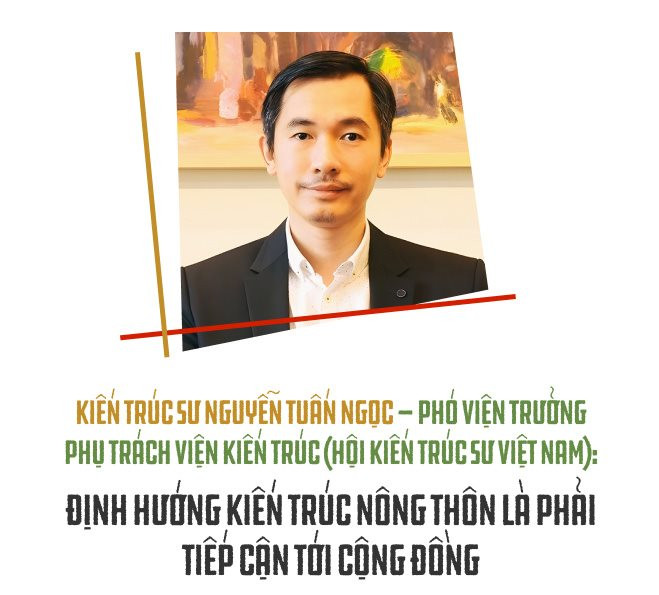
The essence of Vietnamese rural architecture, entwined with the era of integration, is understood as constructing a progressive nature in line with contemporary architectural trends. This extends beyond architectural solutions to encompass ideological content, guiding the development of a new rural society, fostering new lifestyles, and advancing rural progress. The development of contemporary materials, digital technology, and construction techniques plays a role in propelling this process.
A characteristic of rural architecture is the lack of formal designs, primarily relying on self-construction and experiential design rather than the involvement of professional consulting units. This presents a challenge and a unique aspect of the rural architectural approach compared to urban architectural orientation. Therefore, the direction of rural architecture must engage with the community.
Currently, the Prime Minister has tasked the Vietnam Architects Association with promptly completing the scheme “Rural Architecture from Tradition to Modernity, linked with the Period of Integration,” under the mission “Guiding the development of Vietnamese architecture until 2030, vision to 2050.” The Vietnam Architects Association is researching and implementing the creation of handbooks for rural housing; disseminating and promoting the direction of rural architecture through various media channels; constructing experimental models of rural housing; establishing mechanisms for the development and regular updating of handbooks to ensure practicality, aligning with modern rural life.
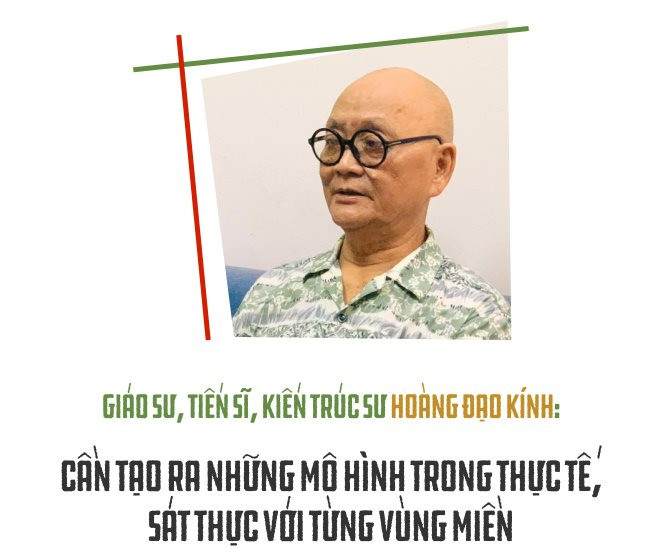
Villages and architecture only thrive when we transform the “capital” of the past and the existing into a seamless bridge connecting the past, present, and future.
Realizing every social policy, every planning idea and architecture in rural areas only happens when farmers are convinced, have trust, and voluntarily participate. Texts, plans, designs, and models are not persuasive enough because people lean towards what they hear and see.
Therefore, managers and architects need to create practical models tailored to each region, with solutions that are correct, effective, and easy to replicate. Imitation by a few villages or farmers can have a more significant impact than any book or film. Many ideas have not reached rural areas primarily due to a lack of effective transmission.
Rural areas are the intermediate space, connecting nature with urban areas, nurturing cultural traditions, and fostering a bond with the homeland and patriotism. Modernizing rural areas does not mean turning them into urban areas. Although there may not be a significant difference in civilization, rural areas should and must differ from urban areas. In the trend of eco-friendly development, urban areas will come closer to rural areas.
Therefore, planning should be directional. The construction model can be established based on basic criteria, avoiding imposition, being flexible, and respecting individual intentions. Regulation and guidance could be the means to ensure that rural development and rural architecture move in the right direction.
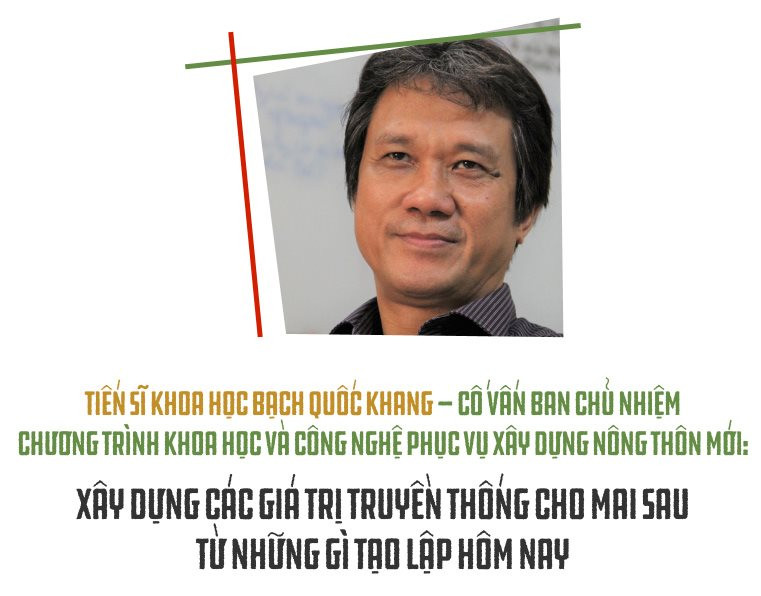
Many rural development schemes seem to focus solely on economic development indicators or follow an “electricity – roads – schools – stations” approach, neglecting the core of rural areas, which is the village structure and spatial dimensions. The planning documents have not delved deep into the pivotal cultural factors to provide a foundation for development.
In terms of culture, architecture plays a crucial role in delineating the roots of traditional cultural values and their evolution throughout historical periods. It elucidates the intricate mechanisms and harmonious integration of cultural aspects, aiding in clearer identification and proposing methods to filter, maintain, and enrich cultural beauty in line with contemporary advancements.
To serve the nation’s development, the architectural sector needs to continue designing comprehensive, sustainable models for new rural areas tailored to different regions, and ethnicities, ensuring uniqueness, and a quality living environment. Achieving harmony between material and spiritual development is essential, and rural areas must remain the cradle of national culture, resilient against economic, social, and environmental changes. Architecture should help Vietnam’s rural areas adopt a new approach: not merely “construction” but a strong shift toward sustainable “development,” preserving traditional values established in the past and constructing enduring values for the future from today’s foundations.
The state also needs to focus on establishing exemplary models for new cultural rural areas, architectural landscapes, developing tourism, traditional handicrafts, and OCOP (One Commune, One Product) products for different regions, considering them as vibrant “soft criteria” with practical significance.
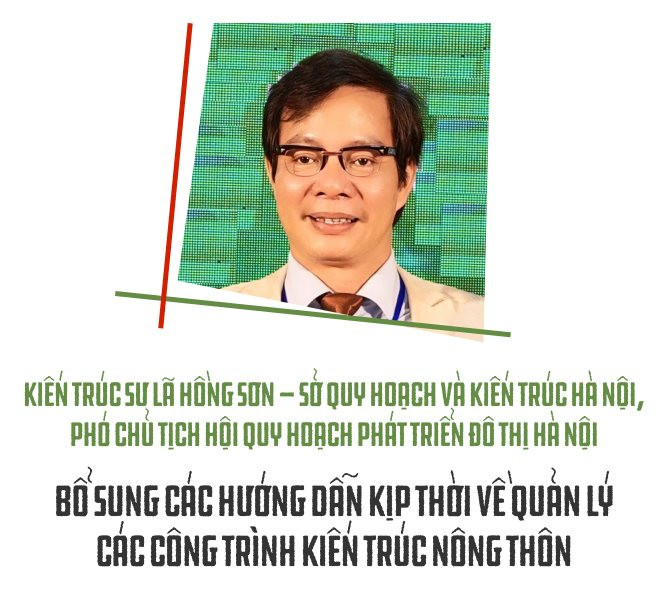
Currently, in the planning and implementation of new rural construction, some trends need immediate attention and correction. These include the tendency to discard the old for the new in restoration and renovation; and the trend of concreting roads without soft grass verges and greenery, especially in village gate areas, where traditional landscape elements such as bamboo hedges and ancient trees need restoration.
Additionally, some trends are distorting the rural architectural landscape, such as the construction of village gates resembling entrance gates in some localities, or the trend of poorly planned construction leading to waste and the need for reconstruction shortly after use.
The Hanoi Urban Planning Development Association suggests that district-level construction planning should be determined, formed, and developed based on factors such as riverside landscapes, large lakes, both sides of major channels, and eco-parks. It emphasizes the inclusion of content for conserving and preserving distinctive landscapes in architectural planning projects for district-level areas.
Localities need to promptly supplement practical guidelines on managing main and branch roads within residential areas, encouraging planning and designing such roads to be green and environmentally friendly, utilizing traditional and sustainable materials while minimizing concrete use.
For roadways, small permeable paver blocks should be considered to reduce water runoff, benefiting plantations. All these architectural plans need to undergo pilot testing before widespread implementation.
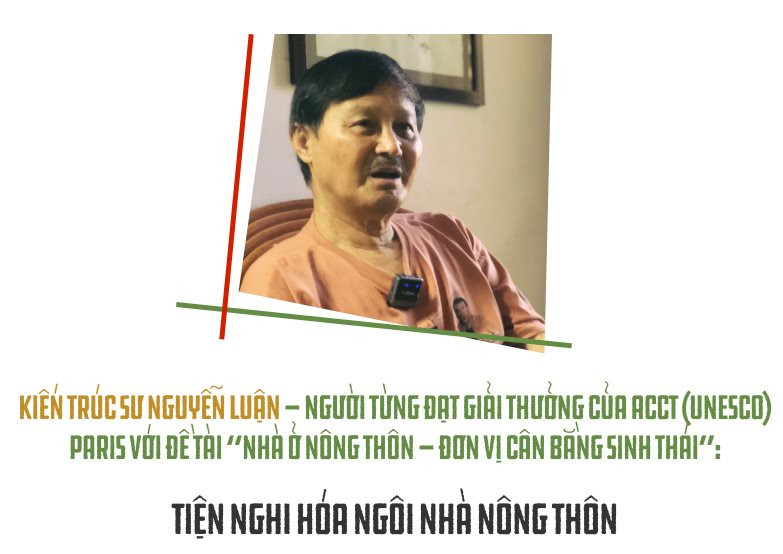
The essence of traditional rural architecture fundamentally lies in the perception of courtyard structures and spatial arrangements, giving rise to traditional models featuring main houses, auxiliary structures, front yards, rear gardens, and livestock pens.
In the inevitable trend of urbanization, attention must be given to space and landscapes, not demanding housing architecture and villages to adhere strictly to past norms. The crucial aspect is preserving the spirit and core traditions of the past. Village spaces should retain the values and architecture of the communal structures – communal houses, temples, and pagodas, historical and cultural landmarks. Residential spaces need to prioritize family courtyards, with architecture adapted to the scale of each space, whether large or small.
Traditional rural homes represent a simple yet highly scientific model. They are not just housing but the entire grounds, harmonizing with natural ecosystems, agricultural ecosystems, and rural ecosystems. Therefore, when constructing models and prototype homes for rural areas, it is essential to consider architectural designs that align with the lifestyle, conditions, landscape, and current production activities of each household.
The rural lifestyle has evolved, and people now have better living conditions and a desire for modern conveniences. Designs for rural homes need to ensure a balance between respecting ancient traditions and providing modern amenities suitable for contemporary living.
Regarding landscape spaces and village architecture, to preserve the essence of ancient villages, localities can revive activities tied to rural life, such as rural markets, and restore “landmarks” associated with Vietnamese villages, like village gates, banyan trees, and communal pond-side stalls.
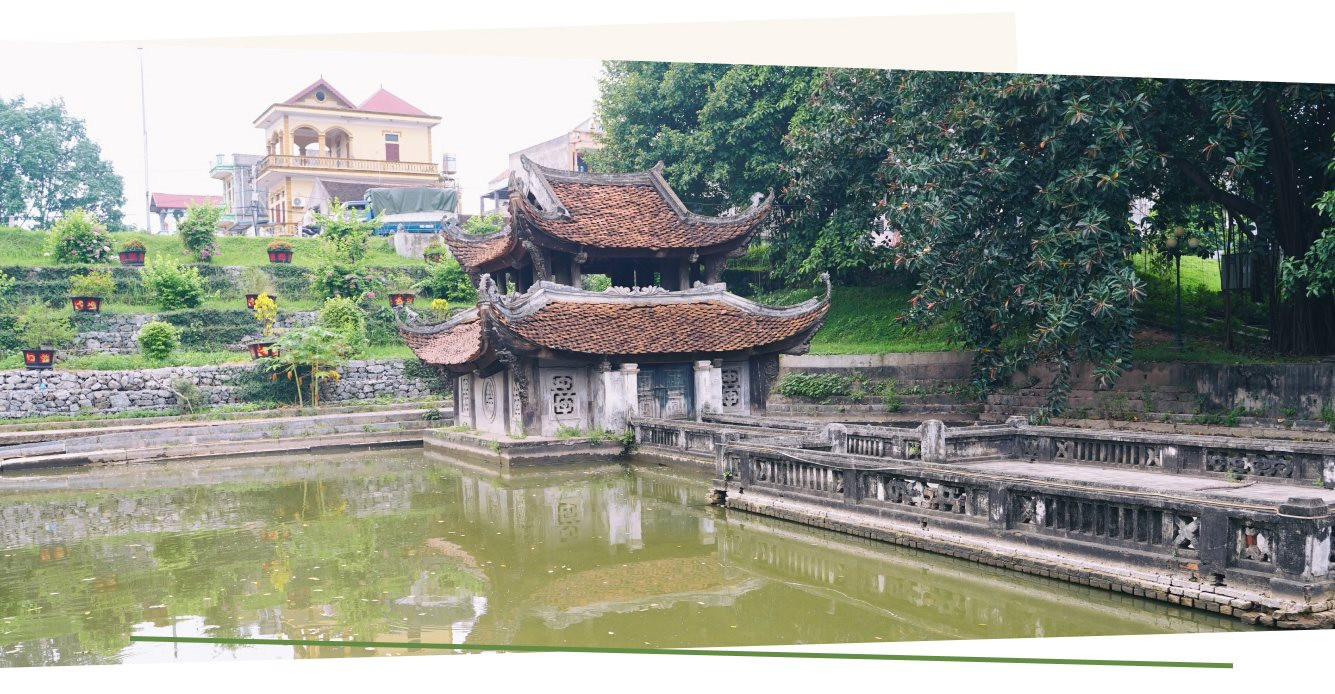
The water pavilion at Giong temple (Phu Dong village, Phu Dong commune, Gia Lam district) remains quite well-preserved.
What will the village be like in the future? That’s the question lingering in our minds as we conclude this series. It’s not just a story of architecture in the villages of Hanoi but of many villages across the country facing the “urbanization storm.”
As the city spills into the villages, roads will get congested, narrow alleys will be cramped, clean water will be scarce, and village roads will turn into bustling markets. Many rural areas will transform into clustered, hastily planned, chaotic areas with corrugated roofs, and stainless-steel water tanks, interspersed within emerging urban zones that sprawl over the remaining fields and ponds.
Numerous craft villages in Hanoi have dwindled, like the Nghi Tam flower village, the Nhat Tan peach blossom village, the Dich Vong green rice flake village, and the Lang vegetable village. This decline also erases cultural spaces and tangible heritages, lost forever and irreplaceable. The remnants of the past are now just street signs at the village entrance. The elderly gather to reminisce about the old days, and young people can only learn about their roots by scanning QR codes at temples or communal houses. The information is abundant but lacks soul!
What will the village be like in the future? We acknowledge that urbanization is an inevitable process. Hanoi, too, evolved from a village to a bustling city, but whether none of these villages lose their “landmarks” as mentioned above will greatly depend on our planning, architectural, and rural planning management efforts today.
What will the village be like in the future? It’s not just a story of preserving the values of the past but also of constructing the present with new cultural values. Establishing a connection that balances the past, present, and future is the responsibility of the managers, planners, and, importantly, the villagers themselves.
Article: Ha Trang – Hoang Quyen – Van An
Photo-Video: Huu Tiep
Design – Technique: Thanh Phong
Bài 5: Để nông thôn là miền di sản (hanoimoi.vn)

